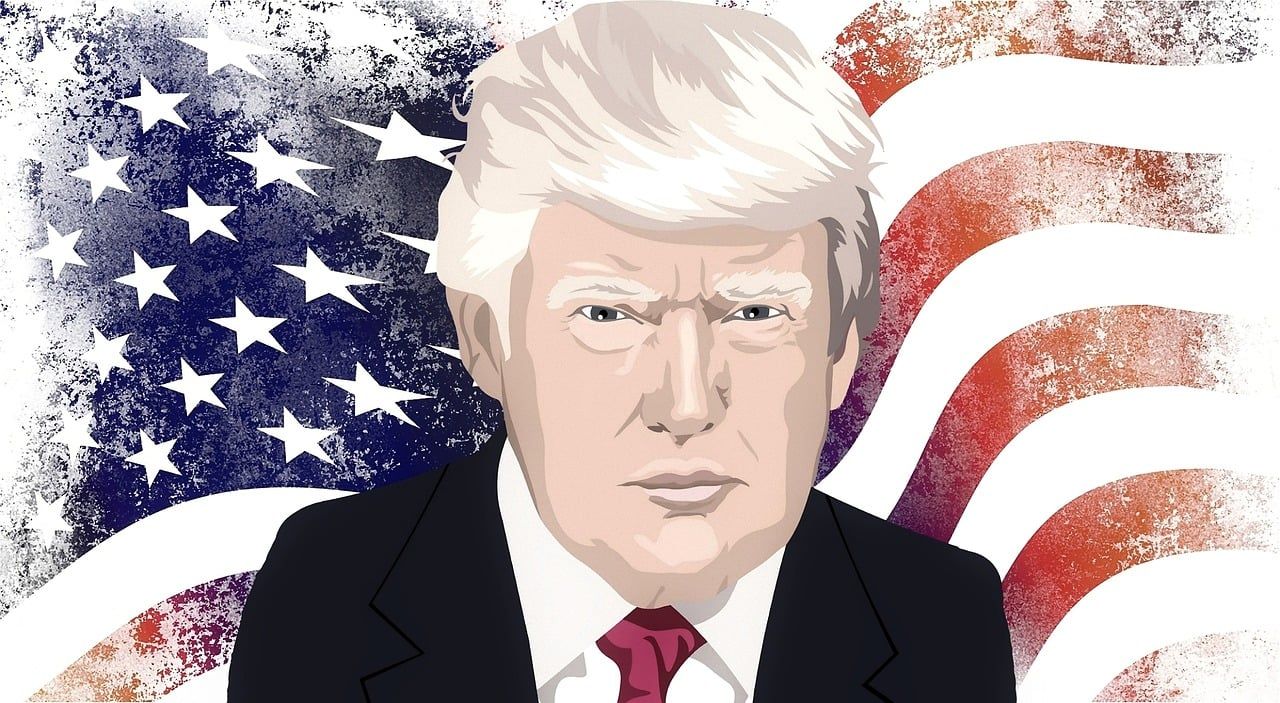DeFi
World Liberty Financial-Labeled Tokens Spark Speculation of Trump-Backed Project’s Stablecoin Launch
Published
1 month agoon
By
admin
Crypto observers were speculating on Monday that World Liberty Financial (WLFI), the decentralized finance (DeFi) platform backed by U.S. President Donald Trump and his family, might be testing its long-awaited dollar stablecoin before rolling out for the broader public.
Blockchain sleuths earlier today noted a flurry of activity with a token labeled as World Liberty Financial USD (USD1) on blockchain monitoring websites Etherscan and BscScan. Blockchain data shows that USD1 was deployed earlier this month on the Ethereum and BNB Chain networks and series of transactions with the token occurring over the past couple weeks.
Some transfers included addresses linked to Wintermute, a large digital asset trading firm and market maker, and crypto custodian BitGo, according to Arkham Intelligence data. The token’s supply currently stood at around 3.5 million-3.5 million on Ethereum and BNB Chain, per Etherscan and BscScan.

Changpeng CZ Zhao, founder of crypto exchange giant Binance, brought widespread attention to the token by “welcoming” the project on BNB Chain in a post with a screenshot of the USD1 BscScan profile shared with his 10 million followers. The post, he later said, triggered a wave of copy-cats aiming to capitalize on the new-found attention.
WLFI, reacting in a X post, said USD1 is not currently available for trading and crypto users should beware of scams.
Stablecoin buzz
WLFI, a project spearheaded by Zachary Folkman and Chase Herro, made a splash last year as one of the first crypto projects enjoying the backing of Trump. The protocol aims to provide a blockchain-based marketplace where users can borrow and lend cryptocurrencies, create liquidity pools and transact with stablecoins.
It’s been widely known that the project is working on crafting its own stablecoin, but there hasn’t been any official communication about exact plans and timing of launching the token publicly. CoinDesk has reached out to the team, but hasn’t received any replies.
Stablecoins are one of the fastest-growing corners of the crypto industry and widely regarded as the killer use case for blockchains. With their prices pegged to an external asset, predominantly to the U.S. dollar, they are widely used as a crypto trading pair and transactions on blockchain rails. They are also increasingly used for everyday payments, remittances and savings, attracting the attention of many venture capital investors.
Buzz around the asset class rejuvenated over the past months as the Trump administration elevated stablecoin regulation to the top of its crypto agenda. Treasury Secretary Scott Bessent said that stablecoins have a key role in preserving the U.S. dollar’s global role as a reserve currency.
Source link
You may like


What is Base? The Ethereum Layer-2 Network Launched by Coinbase


Loopscale hacker in talks to return stolen crypto


Bitcoin (BTC) Yield Platform Coming From Coinbase (COIN), Aspen Digital


The Emerging Market For State Services Via Citizen X


XRP Price Shoots For 20% Surge To $2.51 Amid Pullback To Breakout Zone


Stocks edge higher ahead of big earnings week
DeFi
Monad partners with Chainlink for oracle services ahead of mainnet launch
Published
5 days agoon
April 23, 2025By
admin

Monad has partnered with Chainlink to integrate its oracle services as its mainnet launch looms.
Monad, an EVM-compatible Layer 1 blockhain, has announced a partnership with a leading decentralized oracle provider Chainlink (LINK). When the mainnet launches, developers on Monad will have immediate access to Chainlink’s full suite of Web3 services, including Data Feeds, Data Streams, and the Cross-Chain Interoperability Protocol.
Thanks to Chainlink’s Data Feeds and Data Streams integrations, Monad developers will be able access accurate, tamper-proof market data—such as asset prices and exchange rates—enabling them to build DeFi apps like lending platforms and DEXs. Chainlink’s CCIP will enable secure, programmable cross-chain token transfers, laying the foundation for building interoperable dAapps.
The development comes on the heels of another big announcement from the project, which confirmed that USD Coin (USDC) will be available on the Monad chain starting from day one of its mainnet launch.
Backed by $244 million in funding led by Dragonfly and Paradigm, Monad is an EVM-compatible L1 chain that supports over 10,000 transactions per second, fast block times, low fees, and quick finality, made possible by its parallel execution model.
On Feb. 19, the project launched its testnet alongside an ecosystem directory of 50+ apps, infrastructure providers, and integrations, giving users and developers a robust environment to explore, build, and test on from day one. Phantom, OKX, Uniswap Wallet, and Backpack users can connect instantly, while others can onboard manually via testnet.monad.xyz. A built-in faucet offers testnet MON tokens to for interactions with Monad dApps.
The mainnet launch is slated for the first quarter of 2025, but the exact date is yet to be announced.
Source link

Disclosure: The views and opinions expressed here belong solely to the author and do not represent the views and opinions of crypto.news’ editorial.
Crypto is out of narratives, out of patience, and running out of time to matter. The only way out is forward—by building products people actually use and don’t have to think about. For the past several months, AI agents have been pitched as that future, but most of them are just noise: flashy wrappers that don’t actually do anything.
In the middle of a macro meltdown, with Ethereum’s (ETH) value against Bitcoin (BTC) hitting five-year lows and Bitcoin trading like a high-beta tech stock, no one is begging for another DEX, bridge, or wallet extension. The problem isn’t discoverability. It is a utility. We’ve built an industry optimized for speculation, not service. A financial arcade, not a functioning economy. Most crypto apps don’t have users because they don’t solve anything real.
Volatility is the tell. If crypto were used at scale, real demand would anchor the price. But when macro conditions shift, the whole sector moves in lockstep—because actual usage doesn’t matter. That’s not a UX issue. That’s a product problem.
If crypto wants to survive this phase—let alone escape the echo chamber in the next cycle—we need to stop building abstractions for each other and start building real products for real people.
Why it keeps happening
Crypto has never grown out of its builder-for-builder roots. Success is defined by shipping, not retention. We reward composability over usability. Launches over DAUs. TVL over usefulness.
That’s how we ended up with a wave of AI agents that look good in demos but fall apart in practice—built to impress, not to endure. Builders build for other builders. Teams optimize for token launches, not long-term users. Most roadmaps are driven by narrative timing, not customer feedback. The result? Products that impress on crypto Twitter but don’t matter to anyone outside of it.
User experience is still considered surface-level polish when it should be foundational. We talk about onboarding like it’s a marketing problem, not an architectural one. And we wonder why users churn faster than altcoins collapse.
Not all AI agents are the answer
Take a look at what’s been happening with AI agents in crypto. We’re pretending automation means intelligence. But users don’t need agents that talk. They need agents that do.
And they need agents that can operate with intent: taking autonomous action, interacting onchain, and accruing value, not just information. If this is going to be the narrative of the next cycle—and it might be—we need to raise the bar. What’s missing isn’t another chatbot. It’s autonomy, action, and economic alignment.
The next generation of agents must be onchain actors—agents with memory, incentives, and agency. Not just slick AI interfaces, but participants in the network itself.
What a real product looks like
A real product solves a real problem—clearly, quickly, and without friction. It doesn’t need an explainer thread. It feels like magic, not a UI puzzle. In crypto, the magic moment happens when a product abstracts away the protocol, when it does something for the user without making them think about networks, wallets, or bridges.
Imagine an AI agent that quietly monitors your wallet, and the moment your airdrop unlocks, it claims it and sells at optimal execution—no prompts, no extra steps. At the same time, it watches gas prices and dips into stable-yield reserves you forgot you had, automatically buying the dip without you lifting a finger. When you need to bridge funds or execute a transaction, it instinctively reroutes you through the cheapest and fastest network available, all without asking which chain you’re on or forcing you to approve a dozen steps. That kind of seamless automation isn’t a feature. It’s the foundation of a real product.
These aren’t features. They’re outcomes. And they’re the foundation of actual adoption.
And so these are the kinds of applications crypto needs to hone in on and devote resources to. Real consumer AI agents are a breakthrough here. They act on behalf of users, claiming, trading, and coordinating. They reduce surface area. They make infrastructure invisible. They don’t rely on speculative hype to attain value; they provide an actual service.
That’s how we get crypto out of the power user corn maze and into everyday relevance.
What needs to change (and why now)
This isn’t just about good design. It’s about product discipline. And the timing has never been better. We’re not just in a bear market. We’re in a trust correction. Retail is gone. The ETF narrative is priced in. Altcoins are bleeding out. The Fed and fiscal policy are driving every headline.
This is the best possible time to build—because no one’s watching. There’s no pressure to chase yield or force hype. There’s room to build quiet conviction around something real. So what should builders actually do?
First, they need to design for behavior, not just composability. It’s not enough that components can plug into one another—what matters is whether people actually use them. Real product design starts with the user’s motivation and workflow, not with modularity.
Second, builders should use automation and agents to reduce decision fatigue. Most crypto products overwhelm users with options. The goal should be to eliminate choices, not add more. A great product handles complexity behind the scenes so the user doesn’t have to think.
Third, it’s time to prioritize retention over liquidity mining. If your product only works because there’s a token incentive attached to it, it’s not a product—it’s a promotion. Focus on building something people come back to without needing a bribe.
Finally, usability should be treated as infrastructure, not decoration. The interface is not the cherry on top—it’s the bridge between function and experience. If it’s not intuitive, it’s broken.
AI agents for consumers aren’t a gimmick. They’re the best shot we have at building something people actually return to. Not because they believe in your token. But because the product does something for them.
Stop building for nobody
We don’t need more tokenized interfaces. We don’t need more demos that explain themselves better than they perform. And we definitely don’t need another yield mechanic disguised as a product.
We need software that helps people get something done. That they come back to because it works, not because they’re speculating. Consumer AI agents are the clearest path to that future. Stop building apps no one uses. Start building ones that people don’t even have to think about.

Garrison Yang
Garrison Yang is the co-founder of Mirai Labs, a web3 development studio building intuitive consumer applications that make crypto usable—and useful—for everyone. With over 15 years of experience across engineering, strategy, growth, and product, Garrison blends technical depth with a marketer’s eye for impact. A former professional gamer, he brings a competitive edge and a deep understanding of user behavior to everything he builds. At Mirai, he’s focused on turning blockchain into something people actually use—without even realizing it.
Source link
Altcoins
Native Asset of Bitcoin DeFi Project Surges by More Than 55% This Week Amid New Token Buyback
Published
1 week agoon
April 20, 2025By
admin
The native asset of a Bitcoin (BTC)-focused decentralized finance (DeFi) project defied the crypto market doldrums and skyrocketed by more than 55% this week.
Threshold Network powers tBTC, a decentralized wrapped Bitcoin that can be used throughout DeFi ecosystems.
The project’s native token, T, is trading at $0.0223 at time of writing, up from $0.0143 one week ago. The 236th-ranked crypto asset by market cap is also up nearly 48% in the past 24 hours alone.
T’s price surge largely materialized after Threshold Network announced on Thursday that it planned to restructure its decentralized autonomous organization (DAO) to reduce annual operational costs by approximately $1.1 million.
Explains the project,
“Added to the more than $8.5 million in annual savings expected from the elimination of tBTC staking rewards, this sets the stage for significant profitability moving forward.
Cost efficiency also allows the DAO to eliminate treasury sales of T tokens, enabling it to strategically reinvest in T token. The DAO treasury will continue to accrue tBTC via bridge fees and T tokens via buybacks as per TIP-54.
Threshold has already completed its first purchase of ~30 million T tokens for 5.8 tBTC…
Given the tight economic linkage between T and tBTC, this shift is expected to create a virtuous cycle of growth, where increased Total Value Locked (TVL) and bridge velocity drive T’s value, attracting further participation and reinforcing the ecosystem’s expansion.”
Follow us on X, Facebook and Telegram
Don’t Miss a Beat – Subscribe to get email alerts delivered directly to your inbox
Check Price Action
Surf The Daily Hodl Mix
 

Disclaimer: Opinions expressed at The Daily Hodl are not investment advice. Investors should do their due diligence before making any high-risk investments in Bitcoin, cryptocurrency or digital assets. Please be advised that your transfers and trades are at your own risk, and any losses you may incur are your responsibility. The Daily Hodl does not recommend the buying or selling of any cryptocurrencies or digital assets, nor is The Daily Hodl an investment advisor. Please note that The Daily Hodl participates in affiliate marketing.
Generated Image: Midjourney
Source link

What is Base? The Ethereum Layer-2 Network Launched by Coinbase

Loopscale hacker in talks to return stolen crypto

Bitcoin (BTC) Yield Platform Coming From Coinbase (COIN), Aspen Digital

The Emerging Market For State Services Via Citizen X

XRP Price Shoots For 20% Surge To $2.51 Amid Pullback To Breakout Zone

Stocks edge higher ahead of big earnings week

Here’s How Bitcoin Could Boost Demand for US Treasuries, According to Macro Guru Luke Gromen

Experts Predict US Recession in 2025 if Trump-China Trade War Tariffs Stay

Monero Jumps 51% After ‘Suspicious Transfer’ of $333M in Bitcoin

ZachXBT flags suspicious $330M Bitcoin transfer triggering Monero surge

Monero’s XMR Rockets 40% as XRP Leads Crypto Majors Gains

The 5 top crypto loan platforms of 2025

XRP Price Shows Strength — Breakout Above Key Levels Possible?

Expert Reveals Why The Ethereum-To-Bitcoin Ratio Is Falling

Analyst Says Solana-Based Memecoin Going Much Higher, Sees PENGU Facing ‘True Test’ After April Surge

Arthur Hayes, Murad’s Prediction For Meme Coins, AI & DeFi Coins For 2025

Expert Sees Bitcoin Dipping To $50K While Bullish Signs Persist

3 Voting Polls Show Why Ripple’s XRP Price Could Hit $10 Soon

Aptos Leverages Chainlink To Enhance Scalability and Data Access

Bitcoin Could Rally to $80,000 on the Eve of US Elections

Crypto’s Big Trump Gamble Is Risky

The Future of Bitcoin: Scaling, Institutional Adoption, and Strategic Reserves with Rich Rines

Institutional Investors Go All In on Crypto as 57% Plan to Boost Allocations as Bull Run Heats Up, Sygnum Survey Reveals

Sonic Now ‘Golden Standard’ of Layer-2s After Scaling Transactions to 16,000+ per Second, Says Andre Cronje

Ripple-SEC Case Ends, But These 3 Rivals Could Jump 500x

Has The Bitcoin Price Already Peaked?

A16z-backed Espresso announces mainnet launch of core product

Xmas Altcoin Rally Insights by BNM Agent I

Blockchain groups challenge new broker reporting rule

I’m Grateful for Trump’s Embrace of Bitcoin
Trending

 24/7 Cryptocurrency News6 months ago
24/7 Cryptocurrency News6 months agoArthur Hayes, Murad’s Prediction For Meme Coins, AI & DeFi Coins For 2025

 Bitcoin3 months ago
Bitcoin3 months agoExpert Sees Bitcoin Dipping To $50K While Bullish Signs Persist

 Ripple Price1 month ago
Ripple Price1 month ago3 Voting Polls Show Why Ripple’s XRP Price Could Hit $10 Soon

 24/7 Cryptocurrency News4 months ago
24/7 Cryptocurrency News4 months agoAptos Leverages Chainlink To Enhance Scalability and Data Access

 Bitcoin6 months ago
Bitcoin6 months agoBitcoin Could Rally to $80,000 on the Eve of US Elections

 Opinion6 months ago
Opinion6 months agoCrypto’s Big Trump Gamble Is Risky

 Bitcoin3 months ago
Bitcoin3 months agoThe Future of Bitcoin: Scaling, Institutional Adoption, and Strategic Reserves with Rich Rines

 Bitcoin6 months ago
Bitcoin6 months agoInstitutional Investors Go All In on Crypto as 57% Plan to Boost Allocations as Bull Run Heats Up, Sygnum Survey Reveals


